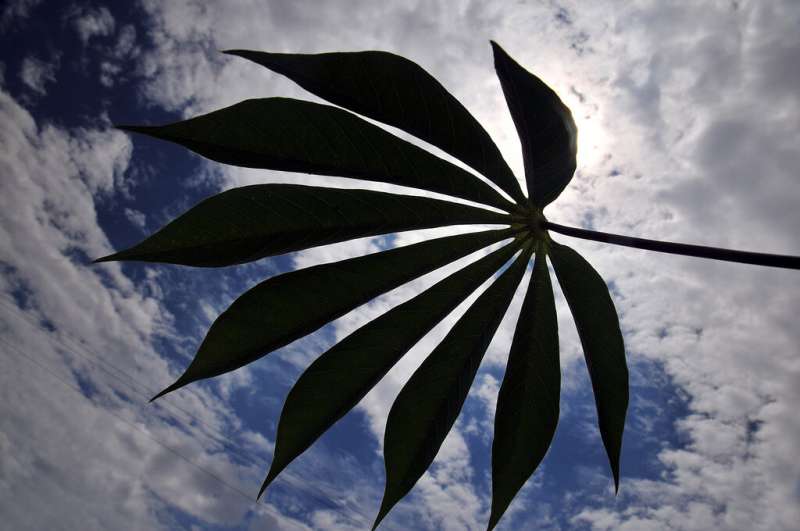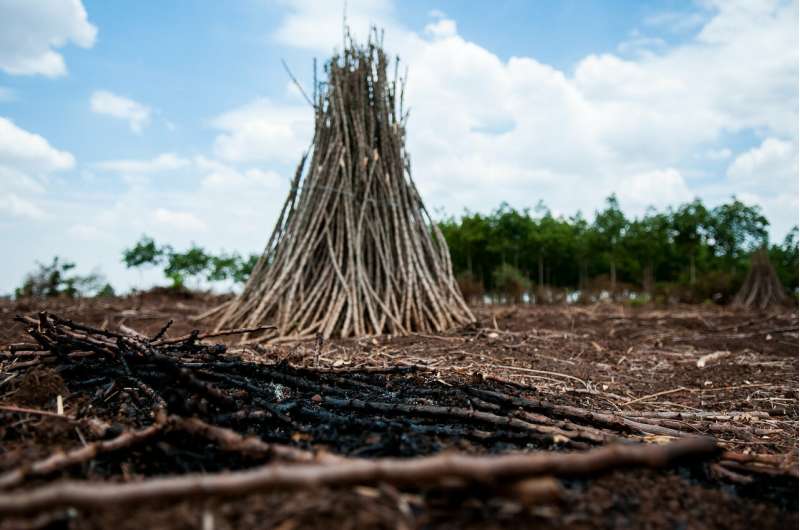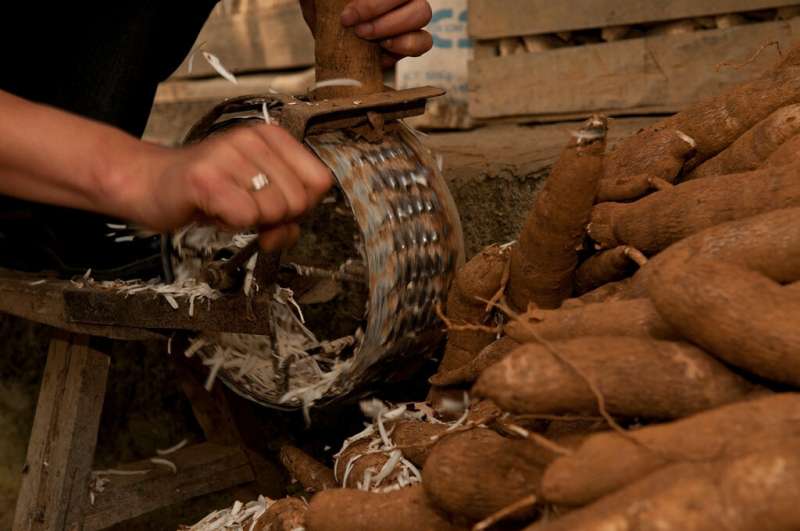Setting the stage for cassava disease monitoring: A baseline for Vietnam and Cambodia
Southeast Asia is the source of 95 percent of global cassava exports, and the detection in 2015 in Cambodia of the potentially harvest-devastating Sri Lankan cassava mosaic virus (SLCMV) raised alarm. By 2016, the disease, which cannot always be detected visually, had spread, showing its potential to become a major threat to the livelihoods of millions of smallholder farming families.

Southeast Asia is the source of 95 percent of global cassava exports, and the detection in 2015 in Cambodia of the potentially harvest-devastating Sri Lankan cassava mosaic virus (SLCMV) raised alarm. By 2016, the disease, which cannot always be detected visually, had spread, showing its potential to become a major threat to the livelihoods of millions of smallholder farming families.
The virus's spread over a single growing season was documented by researchers at the International Center for Tropical Agriculture (CIAT) and colleagues. Published February 22 in PLOS ONE by Minato et al., the study is the first systematic baseline evaluation of SLCMV in Southeast Asia, and provides information that can help decision-makers and development agencies to control the disease.
"However, the window is likely very short, and decisive collective action is required," the study warns.
Millions of smallholders grow the cash crop on more than 3.5 million hectares in Southeast Asia, generating over US$4 billion of export revenue.
Quarantine measures, restrictions on the movement of cut stems—which are sold across the region to plant new fields in a loosely regulated informal market—and eradication measures might still offer a means to control the disease. But SLCMV is also spread by a species of whitefly (Bemisia tabaci), and infected plants do not always show symptoms. In the study, 14 percent of infected plants did not have typical visual symptoms. Molecular techniques were used to detect positive infections, paired with photographs of each individually sampled plant to look for visual disease symptoms.

"Documenting the outbreak and spread at an early stage is critical for understanding the dynamics of the epidemic—and pre-empting or responding effectively to future ones," said Erik Delaquis, a co-author at the International Center for Tropical Agriculture based in Vientiane, Lao PDR. The study builds on a recently published study by Delaquis et al., describing the regional exchange routes for cassava stems that can help researchers predict key points for disease arrival and spread.
"Together, the two studies provide the first published picture of the incidence of SLCMV one year after its discovery in Southeast Asia, and describe for the first time the network of planting material exchange likely to further spread the virus," Delaquis said.
"Our 2016 study provides an essential benchmark for timeline comparison," said Nami Minato, a CIAT researcher and the lead author on the latest study.

Resistance needed
Researchers collected some 6,500 samples from 420 fields in Vietnam and Cambodia during the 2016 sampling period, and discovered 49 SLCMV-infected plants across two provinces in Eastern Cambodia. While this represented only a 2 percent infection rate, since that time the disease was reported in Vietnam and Thailand, suggesting that SLCMV has taken hold in Southeast Asia.
The potential impact of a widespread SLCMV outbreak is currently unknown, partly because the variety of cassava grown in Southeast Asia differs from those grown elsewhere. But related types of cassava mosaic diseases in cassava varieties in Africa and India have shown the potential to wipe out the plant's hearty root, which is a major staple food in the developing world and generally sold for industrial starch in Southeast Asia.
As a new disease in the region, many producers are not yet familiar with its symptoms. And currently, no mobile diagnostic tools are available to farmers (though tools are currently being developed). Both issues may facilitate its spread and limit the impact of control measures. Long-term development of resistant varieties of cassava will likely be needed to control SLCMV, necessitating considerable investment in breeding programs over many years, said the researchers. Improved planting material use and distribution practices were also identified to help control the spread of SLCMV and other cassava pests and diseases over long distances.
source : https://phys.org/news/2019-02-stage-cassava-disease-baseline-vietnam.html#jC
